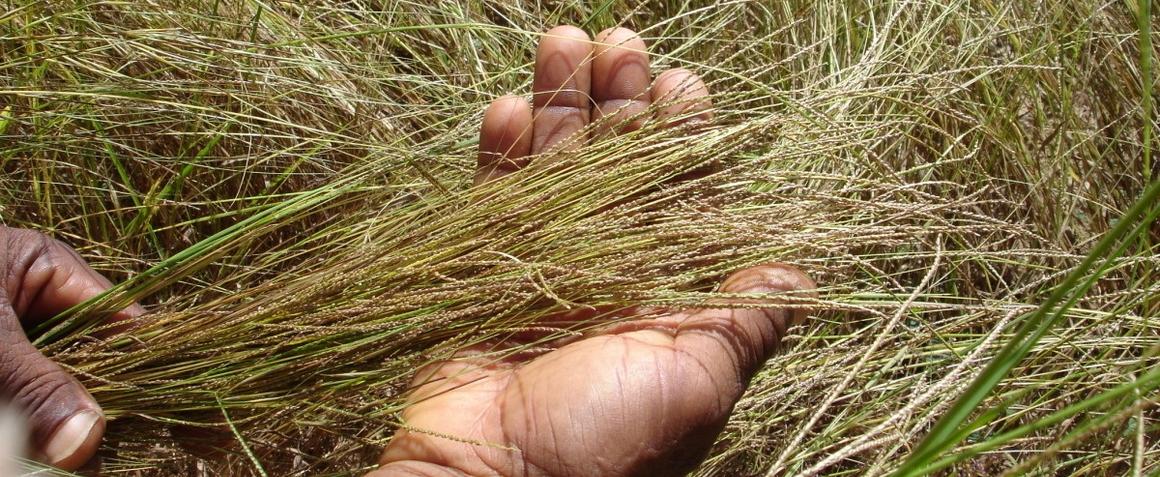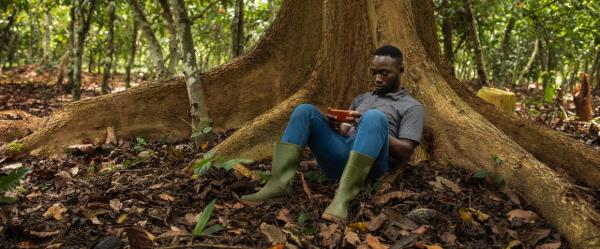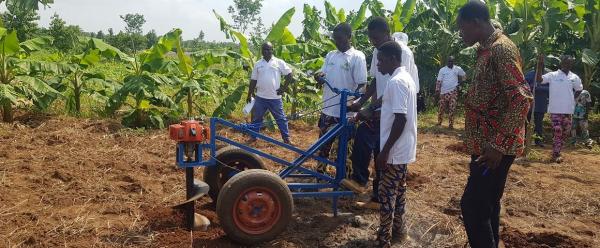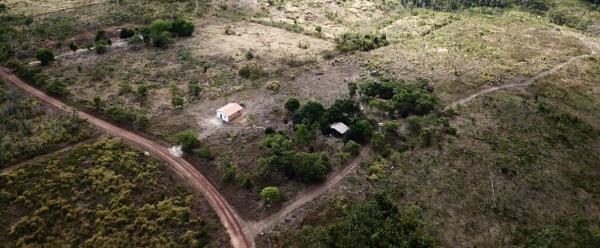Call to action 25 November 2025
- Home
- CIRAD news
- News
- Millets, cereals for resilient agriculture
Cereals: could millets be the staunchest allies of sustainable, resilient agriculture and food production?

Fonio, one of Africa's oldest cereals © J-F. Cruz, CIRAD
What do you know about millet, or rather millets? This family of cereals, of vital importance in several world regions, remains relatively unknown in the global North.
The name "millet" covers a wide range of plants belonging to different genera, but all from the family Poaceae, which includes most species commonly known as "grasses", and cereals. All millets originated in Africa or Asia, are rustic and relatively drought-tolerant, and produce small seeds (a few millimetres).
They were domesticated several millennia ago in their regions of origin, and have spread widely since.
"Secondary" cereals...
Most of the millet currently produced worldwide is sorghum or "great millet" (Sorghum bicolor), the fifth leading cereal worldwide with 60 million tonnes, of which almost half comes from Africa and a third from the Americas; or pearl millet (Pennisetum glaucum) with 15 to 20 million tonnes, primarily in India and the Sahel region of Africa.
The main other millets are finger millet (Eleusine coracana); proso millet or common millet (Panicum miliaceum); foxtail millet (Setaria italica); teff (Eragrostis tef) and fonios: white (Digitaria exilis), black (D. iburua) and animal fonio (Brachiaria deflexa). They are mostly grown in Asia and Africa, with a total of 10 to 15 million tonnes produced each year.
In comparison, maize production worldwide totals more than 1000 million tonnes, wheat and rice 750 million tonnes each, and barley 160 million tonnes.
Millets are therefore seen as "secondary cereals" in production terms.
... that are vital to people in the arid zones of Africa and Asia
Millets are among the few plants capable of producing calories in subsistence farming conditions with few inputs, poor soils and periods of drought, and are vitally important for food security in the arid zones of sub-Saharan Africa and Asia, where they are the staple food for 600 million people.
Most millet goes to feed humans, in the form of cooked, hulled whole grains or flour used to make culinary preparations.
Millets have been used for thousands of years, in many local specialities. In West Africa, there is tô, a thick porridge made from millet or cornmeal; thiéré, a millet couscous eaten at religious festivals in Senegal; futti fognè, a fonio-based vegetarian dish seen as a "poor man's dish" in Guinea; and fermented, malted millet-based drinks such as dolo, gowé and tchapalo.
In Ethiopia, injera, a type of pancake made with teff or fermented sorghum, is eaten with every meal. In India, sorghum flour-based bhakri bread is a staple in several regions. In Greater Mongolia, people make süütei tsai, a milky tea containing fried common millet seeds, while in China, baijiu maotai, a sorghum alcohol, is seen as the best possible spirit.
Millets are vital for the food and nutrition security of millions of poor people in semi-arid regions suffering from the effects of climate change, but have been largely overlooked in terms of attention and investment compared to the other leading cereal crops.
More than just a food, a plant with many virtues
From a nutrition point of view, in addition to the calories they provide, millets are particularly rich in fibre and, depending on the species, in certain minerals (iron and zinc), vitamins (A and B), amino acids (methionine and cysteine) and anti-oxidants (polyphenols). They all have the advantage of not containing gluten, a protein to which increasing numbers of people are intolerant. Moreover, some of these cereals apparently have a positive effect on diabetes or blood pressure, which would be worth investigating.
Millets are also used as animal feed: the stems and leaves of some species make excellent quality fodder, while the seeds of others serve to feed birds, poultry and cattle.
Other uses could be developed as regards energy production (bioethanol, biogas or hydrogen) or biomaterials, for which sorghum and pearl millet are particularly suitable. However, their development calls for detailed analyses of every aspect of their sustainability, and competition for land use (between food and non-food production) should also be considered.
Millets have the advantage of being productive under difficult ecological conditions. They are rustic, disease resistant, suited to poor soils, heat and low rainfall, and some are capable of growing in highland areas (teff and finger millet). They are traditionally intercropped with pulses, enabling more efficient soil fertility management. These advantages make millets an asset for agroecological transition, at a time when farming needs to reinvent itself and rely more on natural regulation mechanisms than on input use.
How can we exploit the potential of millets?
The first challenge is to improve millet-based food crop production systems to boost yields and reduce food insecurity among the families that depend on them. In particular, this involves varietal breeding and access to quality seed; developing biotic stress control methods; managing soil fertility better; developing small-scale mechanization; and access to credit for farmers.
The next challenge is to improve drying, storage and processing techniques and millet product quality. Developing processing units with a reliable supply and launching a wider range of "ready-to-cook" products whose quality and shelf life are guaranteed, backed by ad campaigns vaunting the advantages of millets should help boost demand, particularly in urban areas, and serve to reconquer markets currently dominated by imported goods.
Millet is primarily grown as a food crop, and there are not currently any interprofessional structures like those for cash crops. The third challenge is therefore to coordinate all the stakeholders in the value chain more efficiently, including as regards research operations and public policy, to share information and to facilitate access to training, equipment and funding. These are prerequisites for the emergence, adaptation and adoption of innovations.
Millets are key crops for food security and sovereignty in semi-arid zones, and are also possible candidates for supporting the ecological transition and the diversification of cropping systems in temperate and developed countries. They therefore warrant stronger synergies between research and development partners in the global North and global South.
It looks likely that 2023, which the UN has designated International Year of Millets, and more particularly the upcoming World Conference on Sorghum, to be held in Montpellier in June 2023, will serve to catalyse these dynamics.



























